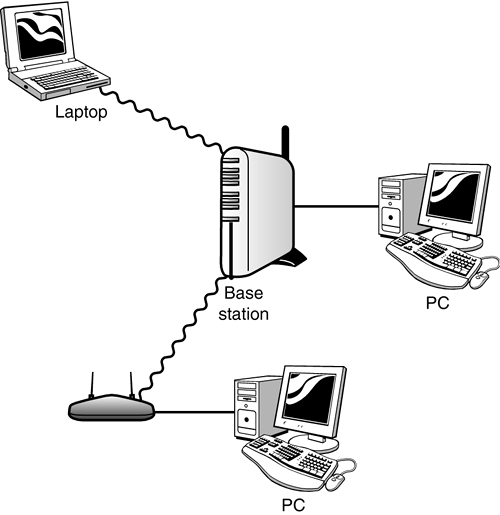Setting Up a Wireless Network
| If you don't want to run all those cables, you need a wireless network. The setup is similar, but with some important differences. How It WorksIn a wireless network, the hub function is performed by a wireless router, sometimes called a base station or an access point. This device can make both wireless and wired connections; most base stations include four or more Ethernet connectors in addition to wireless capabilities. As shown in Figure 8.2, you connect your main PC directly to the base station using an Ethernet cable. All the other PCs in your network can connect either wirelessly or via Ethernet. Figure 8.2. Setting up a wireless network.
The wireless PCs on your network must be connected to or contain wireless adapters. These devices function as mini-transmitters/receivers to communicate with the base station. Wireless adapters can be small external devices that connect to the PC via USB, expansion cards that install inside your system unit, or PC cards that insert into a portable PC's card slot.
What You NeedHere's the specific hardware you'll need to set up your wireless network:
In addition, if you're connecting a broadband Internet modem to your network, you'll need to run a second Ethernet cable from the modem to the wireless base station. (See Chapter 21 for more details.) Making the ConnectionsJust as when you're setting up a wired network, you should follow the instructions that come with your wireless base station to properly set up your wireless network. In general, however, here are the steps to take:
After you've connected all the computers on your network, you can proceed to connect your broadband modem, as well as configure any devices (such as printers) you want to share over the network. For example, if you want to share a single printer over the network, it connects to one of the network PCs (not directly to the router), and then is shared through that PC. |
EAN: 2147483647
Pages: 253
